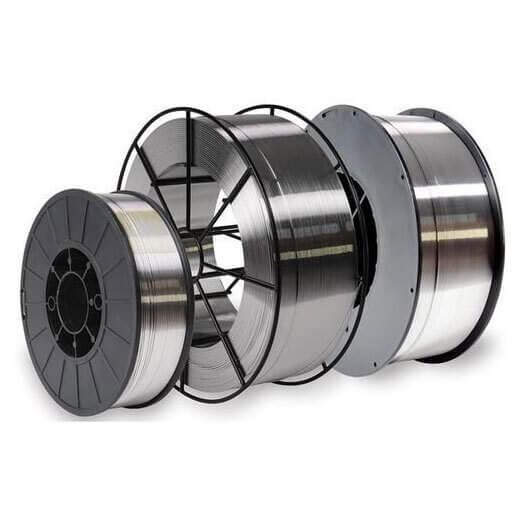When it comes to welding, stainless steel MIG wires are a crucial component for achieving strong, clean, and efficient welds. However, knowing how long they can be safely stored is equally important. If stored incorrectly, MIG wires can degrade, leading to subpar welding results. In this blog, we will explore the lifespan of stainless steel MIG wires in storage, factors that impact their longevity, and best practices for extending their shelf life.
What Affects the Longevity of Stainless Steel MIG Wires in Storage?
Several factors impact the longevity of stainless steel MIG wires in storage. These include:
- Humidity and Moisture Exposure: The most significant enemy of stainless steel MIG wires is moisture. Stainless steel, though resistant to rust, can still corrode when exposed to excessive moisture for extended periods. This can lead to the formation of oxidation on the surface, which impacts the welding quality.
- Temperature Fluctuations: Frequent changes in temperature can create condensation in storage areas, leading to moisture buildup. Temperature stability is critical to ensuring that the MIG wires don’t experience degradation.
- Dust and Contamination: Stainless steel MIG wires can attract dust and other airborne contaminants that may settle on their surface over time. These contaminants can compromise the quality of the weld, causing inconsistent performance when the wire is finally used.
- Packaging: Many MIG wires are packaged with protective films or in sealed containers to prevent exposure to air and moisture. If the packaging is compromised, the lifespan of the wire will be reduced due to increased exposure to harmful elements.
How Long Can Stainless Steel MIG Wires Be Safely Stored?
Under optimal conditions, stainless steel MIG wires can be stored for up to three years without significant degradation in quality. This assumes that the wire is kept in its original sealed packaging and is stored in a controlled environment free from excess moisture and contaminants. However, the longer the wires are stored, the more crucial proper storage techniques become.
If stainless steel MIG wires are stored in less-than-ideal conditions, their lifespan can be significantly reduced. In environments with high humidity or fluctuating temperatures, MIG wires can begin to show signs of oxidation or contamination within six months to a year.
Best Practices for Storing Stainless Steel MIG Wires
To ensure the longest possible storage life for your stainless steel MIG wires, follow these best practices:
- Store in a Dry, Controlled Environment: Always store MIG wires in an environment that is dry, free from excess humidity, and maintained at a constant temperature. Avoid areas prone to condensation or temperature swings, such as uninsulated garages or outdoor sheds.
- Keep Packaging Sealed Until Use: If possible, avoid breaking the seal on the MIG wire packaging until you're ready to use it. If the original packaging is opened, consider storing the wire in an airtight container with moisture-absorbing packets to reduce exposure to air and moisture.
- Use Dehumidifiers in Storage Areas: If you're storing MIG wires in an area where humidity could be a concern, consider using a dehumidifier. This will help reduce the overall moisture levels and protect the wire from rust and corrosion.
- Rotate Your Stock: Make it a habit to use older MIG wire stock first to prevent long-term storage of any one batch. This practice, often referred to as “first-in, first-out,” helps ensure that your wires are used while still in optimal condition.
- Inspect Before Use: Even with proper storage, always inspect stainless steel MIG wires before use. Look for any signs of oxidation, rust, or contamination. If any degradation is visible, it’s best to discard the wire and use a new one to prevent welding defects.
Signs That Stainless Steel MIG Wires Have Deteriorated
Before using stainless steel MIG wires that have been stored for a long period, check for signs of deterioration. Here are some indicators that the wire may no longer be usable:
- Visible Rust or Oxidation: If there is any rust or visible oxidation on the wire’s surface, it should not be used for welding.
- Rough or Sticky Surface: A smooth surface is key for optimal feeding through a MIG welder. If the wire feels rough or sticky to the touch, it may lead to inconsistent feeding.
- Discoloration: Look for any signs of discoloration that suggest contamination or oxidation, which could negatively impact weld quality.
Check out this website for the quality stainless steel MIG wires.
Conclusion
In summary, stainless steel MIG wires can last for a considerable amount of time in storage, especially when stored under optimal conditions. Proper storage methods, such as keeping wires in a dry, temperature-controlled environment and maintaining their original packaging, are essential for preserving their quality over time. If stored correctly, these wires can last up to three years or more, ensuring that you always have high-quality materials on hand for your welding projects.

